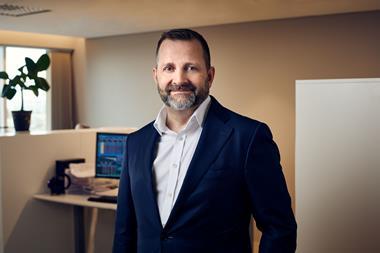Debbie Harrison takes a hard look at the current investment strategy of some of the leading multi-manager consultants and the manager of managers providers in Europe
Multi-manager consultants
Watson Wyatt
Structured Alpha arguably represents the state of the art for multi-manager structures provided on an advisory basis. The key focus is on very specialist ‘satellite’ or ‘absolute return’ managers which aim to give an outperformance of 3% a year. The consultant’s investment management research under Roger Urwin and Tim Hodgson is highly rated by competitors and asset managers alike. (Hodgson spent five years at Stamford Associates and two at Sedgwick Noble Lowndes before joining Watson Wyatt). However, the strategy is not necessarily multi-style. Different styles are used but the ‘balance’ is achieved through a core passive and active balanced portfolio.
In practice, Watson Wyatt has pushed its structured alpha model as far as it can go without it crossing the line into manager of managers territory. The control over final appointments of sub-managers remained with the trustees but Watson Wyatt’s decision to introduce a performance-related fee scale in an advisory service indicates its willingness to become a stakeholder in the implementation process.
The current market for structured alpha in the UK is the very large £1bn (e1.7bn)-plus schemes where the client can establish a trustee investment committee which can respond swiftly to the frequent monitoring decisions required for very specialist manager mandates.
Watson Wyatt uses a simpler version of Structured Alpha in continental Europe. This includes the use of pooled funds for small to medium-sized schemes.
William M Mercer
William M Mercer was one of the first consultants to recommend to appropriate clients in the UK the attractions of the multi-manager, core/satellite structure. The company says it has no doubt that over the long term, multi-manager is the way forward for European pension funds, but that this will not happen overnight. Given the local nature of most existing arrangements, where the fund might appoint a balanced manager or insurance company from the limited range of domestic players to run the fund, it is a considerable leap forward to use a range of external managers. “Nevertheless,” the company says, “we believe the move to multi-managers will come quickly following the impact of the euro.”
Mercer has seen an increase in demand for multi-manager structures but stresses that this is not in any way a stampede. In some cases a fund might move forwards by appointing a consultant to advise on a second manager in addition to the current balanced manager – either a second generalist or a specialist.
Unlike SEI and Northern Trust (see below) Mercer’s ‘brand’, if you like, is consultancy, not fund management. The consultant’s growth in Europe has been driven largely by acquisition. The main markets at present for Mercer are the UK, Ireland and Netherlands but they are also growing in Spain, Sweden, Switzerland, Belgium, Portugal and Germany.
Mercer’s client base is made up of a mixture of local and multinational companies. Size is not an issue and the consultant says it is willing to ‘package’ its services for smaller clients. It describes this aspect of its business development as ‘work in progress’.
Mercer’s target market in the Netherlands, for example, is not the huge funds, which tend to be self-sufficient, but the vast number of large to small funds. Historically the smaller funds have tended to use opaque insured arrangements. The consultant says its aim is to introduce greater transparency and to assist in the process of broadening the market.
In Switzerland many funds are managed in house. Mercer again believes there is a role for consultants to help funds achieve transparency. “Transparency is critical as it helps the sponsoring companies assess whether the pension assets are invested optimally. From the fiduciary’s perspective it is part of the process of demonstrating due diligence and to fulfil corporate governance responsibilities,” the company says.
THE MoM PROVIDERS
In January 2000 several organisations interested in the provision of multi manager structures created the Association for Multi Manager Investing (AMMI – see page 12).
The founding members were Frank Russell, GAM, Northern Trust Global Investments (NTGI), SEI Investments (SEI), Stamford Associates and William M Mercer. Mercer has since sold its MoM operation to PSG Escher, but it is expected that the new company, Escher UK, formed following the sale, will join.
MoM providers fall into several categories:
q Simplified MoM The simplified version is not multi-style but uses just one manager per asset category. Several low-cost industry-wide and prototype ‘stakeholder’ schemes in the UK have adopted this structure. In March 2000, the latest player in Europe’s small but growing MoM market made its entry when the South African manager PSG Escher Investments bought William M Mercer’s SuperFlex ‘manager of managers’ asset management service, which Mercer itself had acquired when it took over Sedgwick Noble Lowndes in 1998.
At the same time PSG Escher launched Escher UK to provide MoM services in the UK and Continental Europe. The South African asset manager is backed by Mercer’s manager selection expertise. It is not clear at this stage whether Escher’s MoM product will retain the single-style structure of the Superflex scheme or adopt a multi-style strategy.
q Multi-style MoM consultancy Multi-style MoM on a consultancy basis is offered by Stamford Associates in the UK but not, as yet, on a direct basis in continental Europe.
q Multi-style MoM institutional asset managers This product – where the provider holds the assets under management – is offered by Frank Russell, NTGI and SEI. At present, Russell is alone in combining its investment consultancy and manager of managers services in RIAM – Russell Integrated Asset Management – which offers a complete package from the initial asset liability modelling through to the selection, implementation and monitoring of the multi-manager structure.
NTGI is a more recent entrant to the UK market and is preparing to launch its MoM service in Europe to small to medium-sized pension funds. It also plans to sell its specialist segregated services to larger funds, as it does in the UK. In 1999 the company won the first UK multi-manager beauty parade (see page 9).
SEI, like NTGI, is looking to market an asset management strategy in Europe, not a consultancy service.
q Multi-style MoM as a retail product Global Asset Management (now owned by Union Bank of Switzerland) dominates this retail market for MoM. It does offer MoM to a growing number of institutional pension funds but its primary target is very high-net- worth individuals, although some of its funds are also available as mutual funds.
Several other MoM providers already have established or are looking to establish joint ventures to distribute their funds into the retail market. Frank Russell has a joint venture in France with Société Générale and in Italy with ARCA. SEI is also considering ventures through independent financial advisers and recently announced a venture with CCF in France. Stamford is also developing its retail outlets through joint ventures and recently signed up with J R Rothschild in the UK.














No comments yet